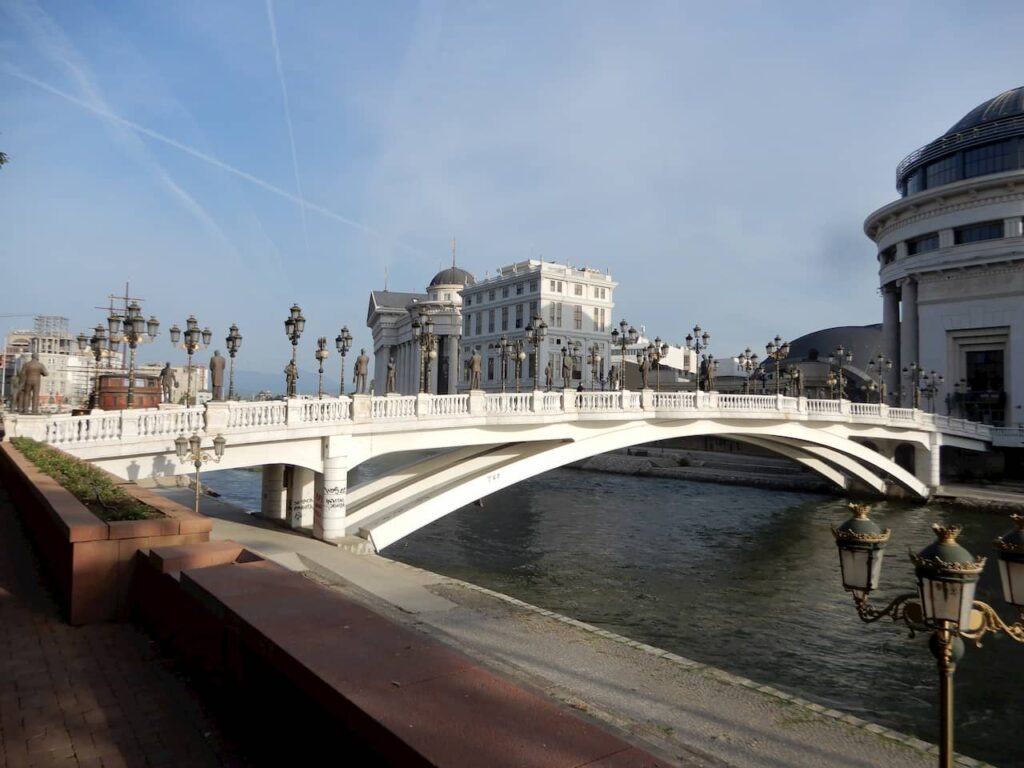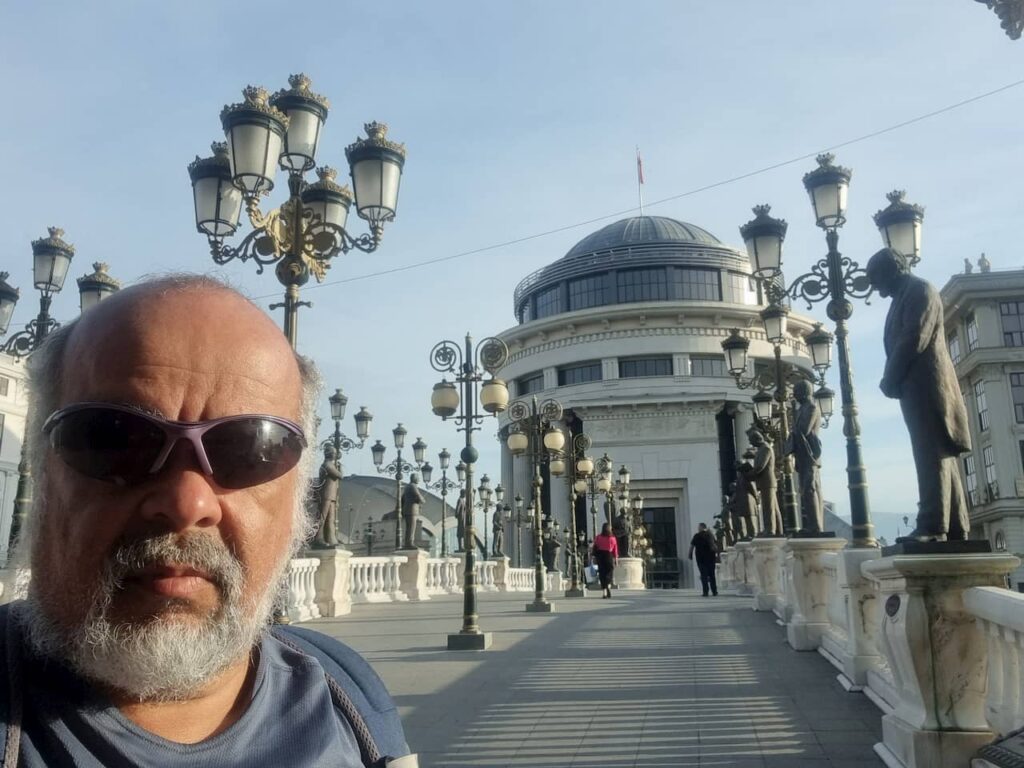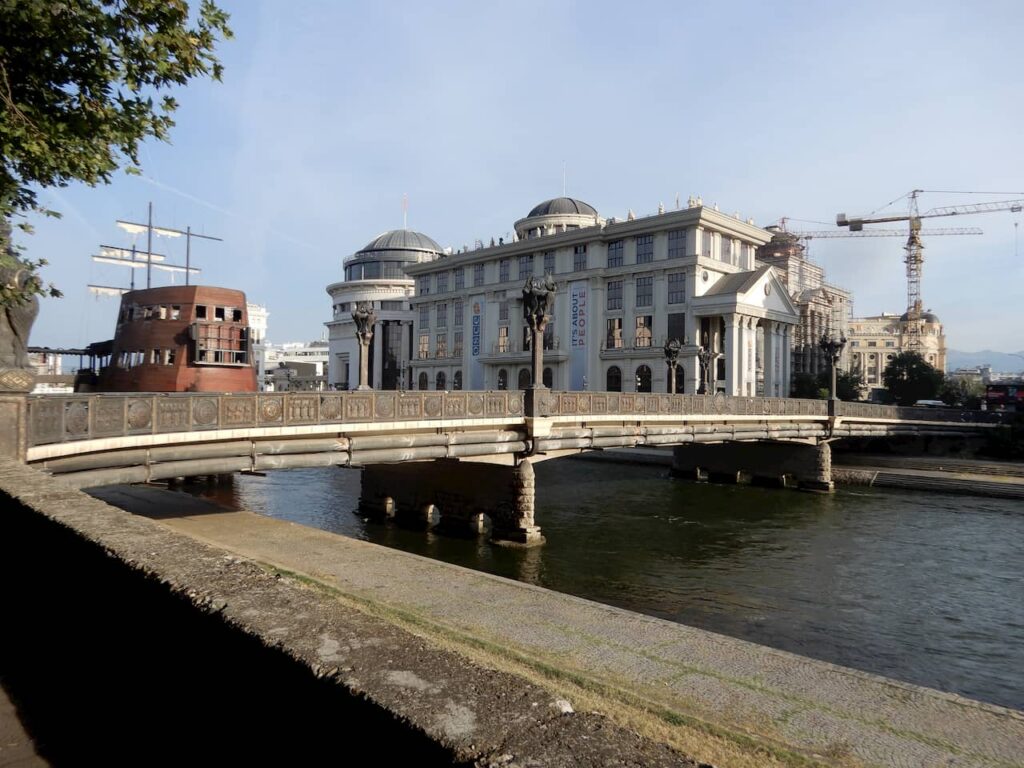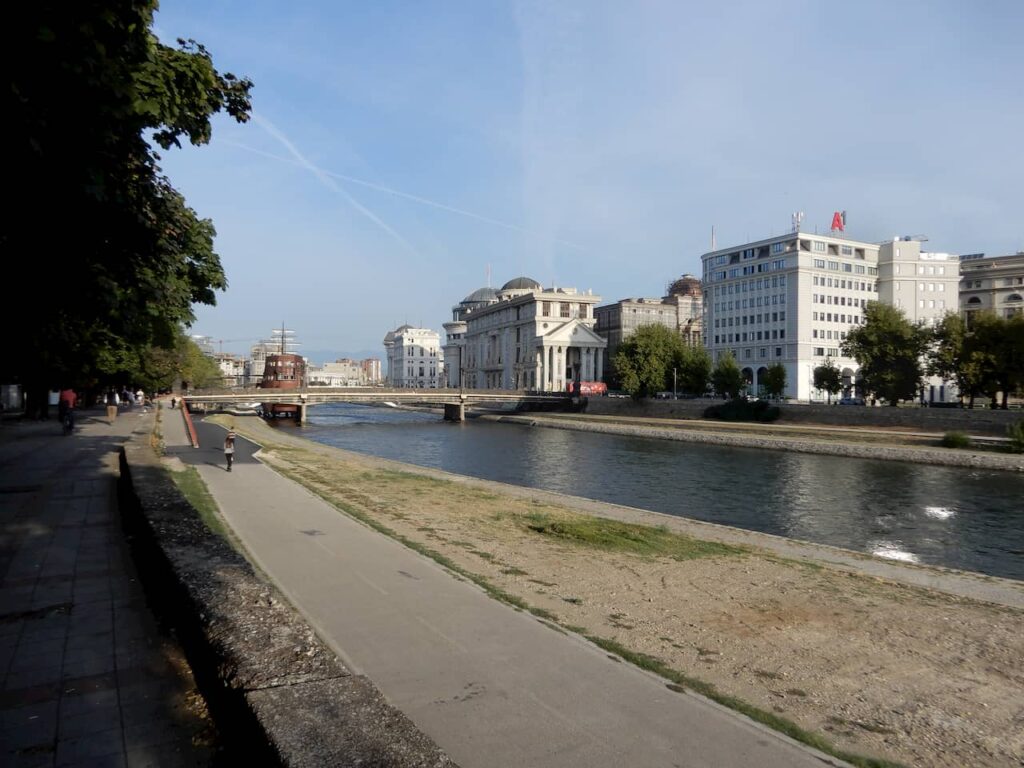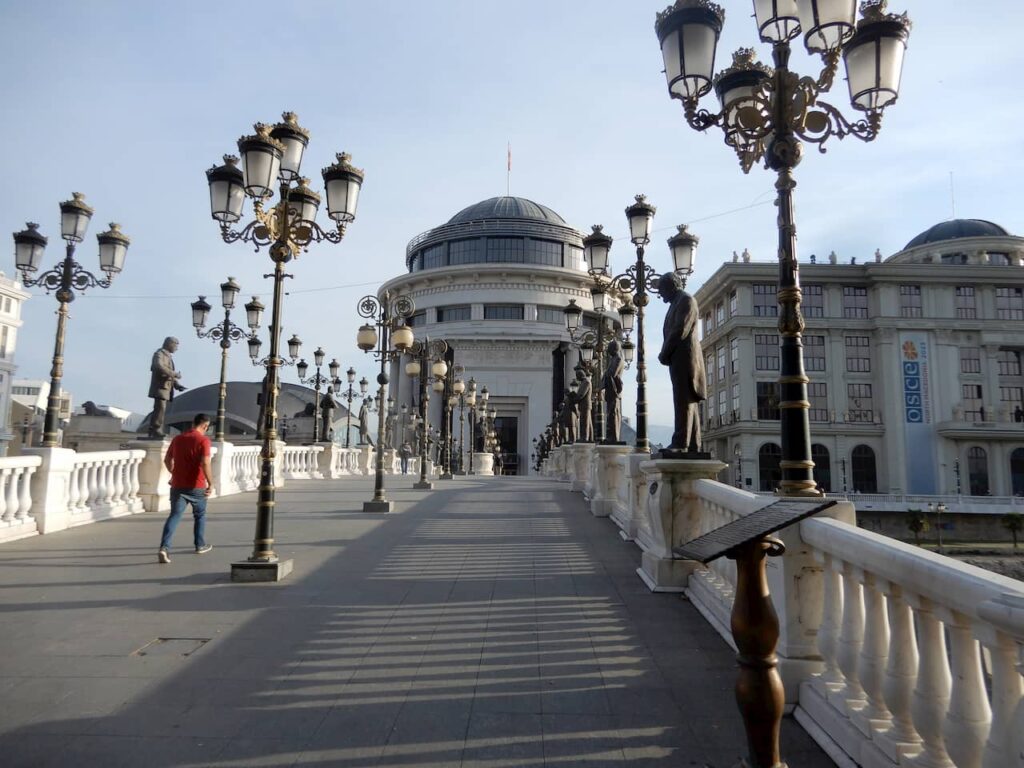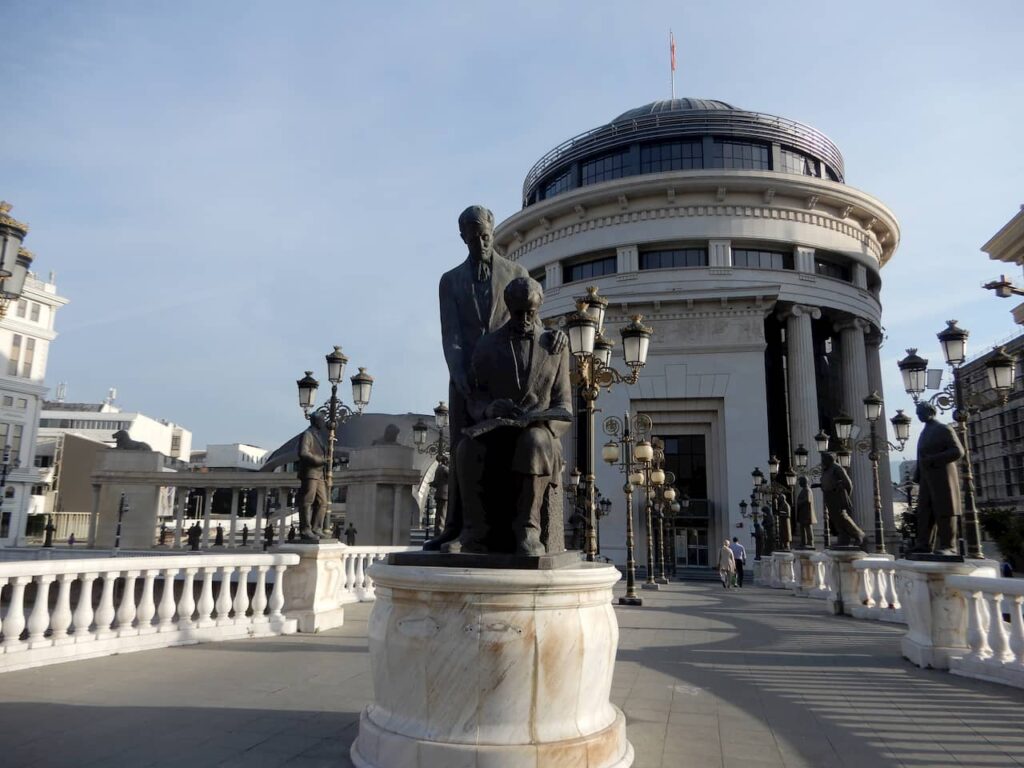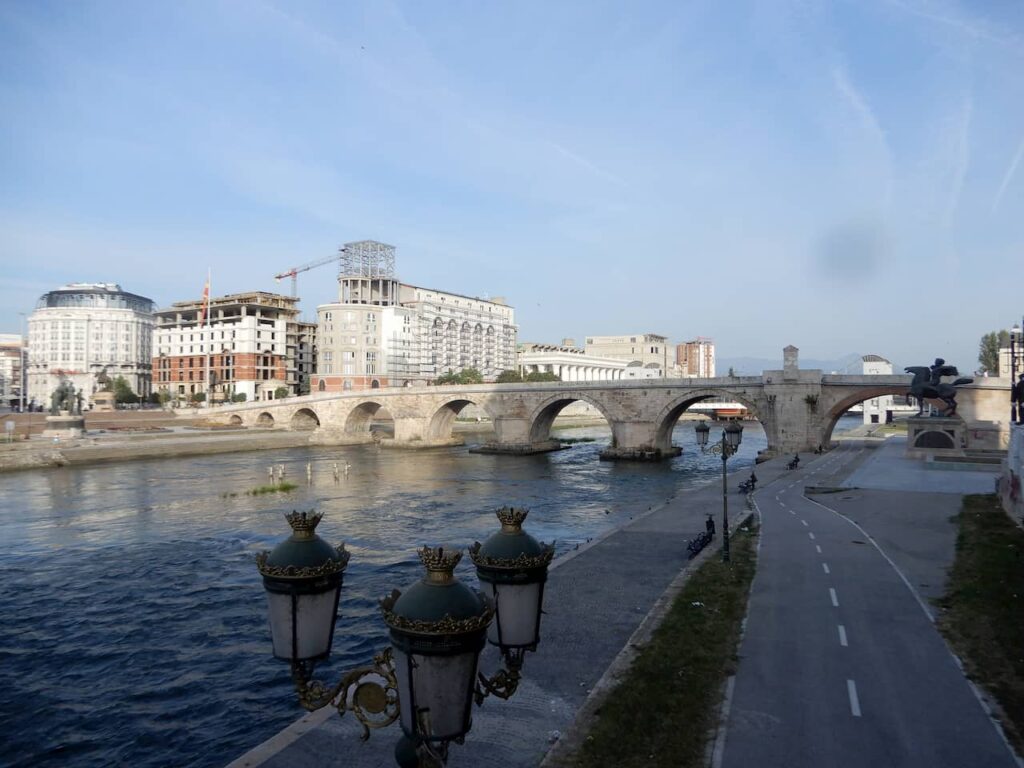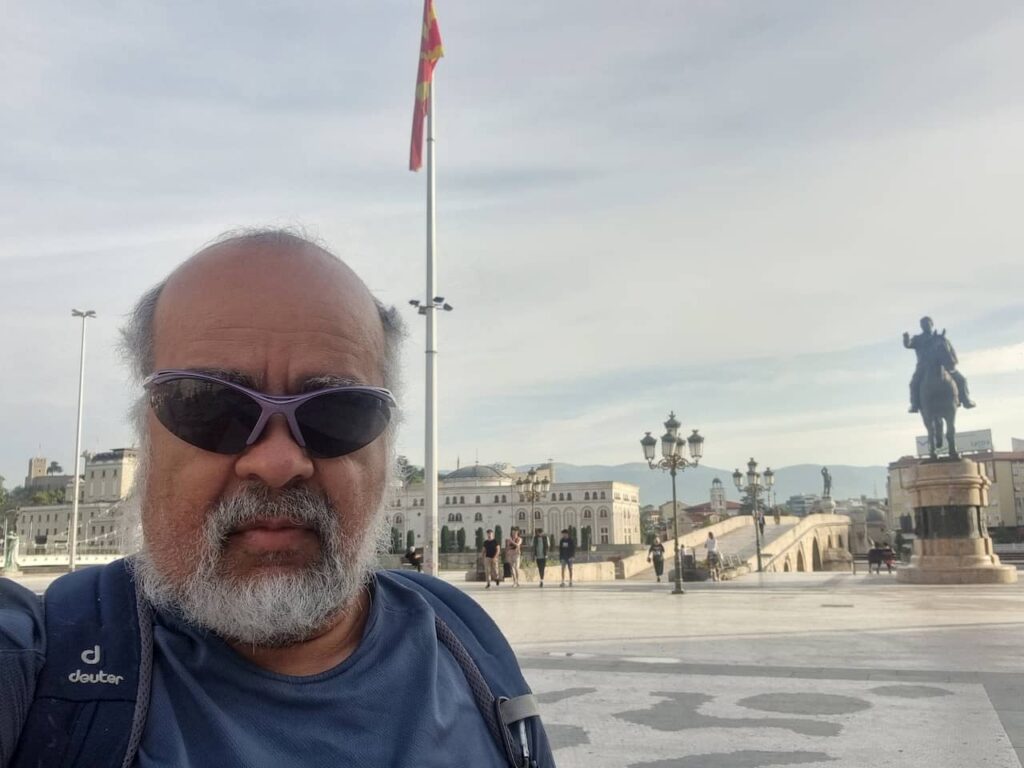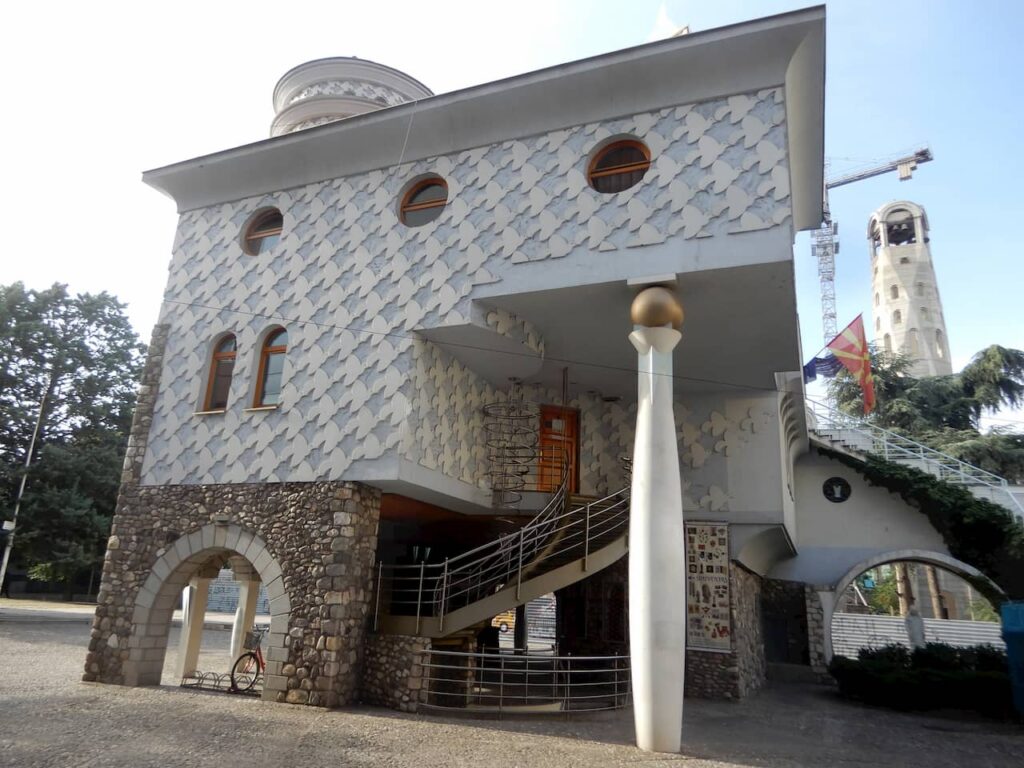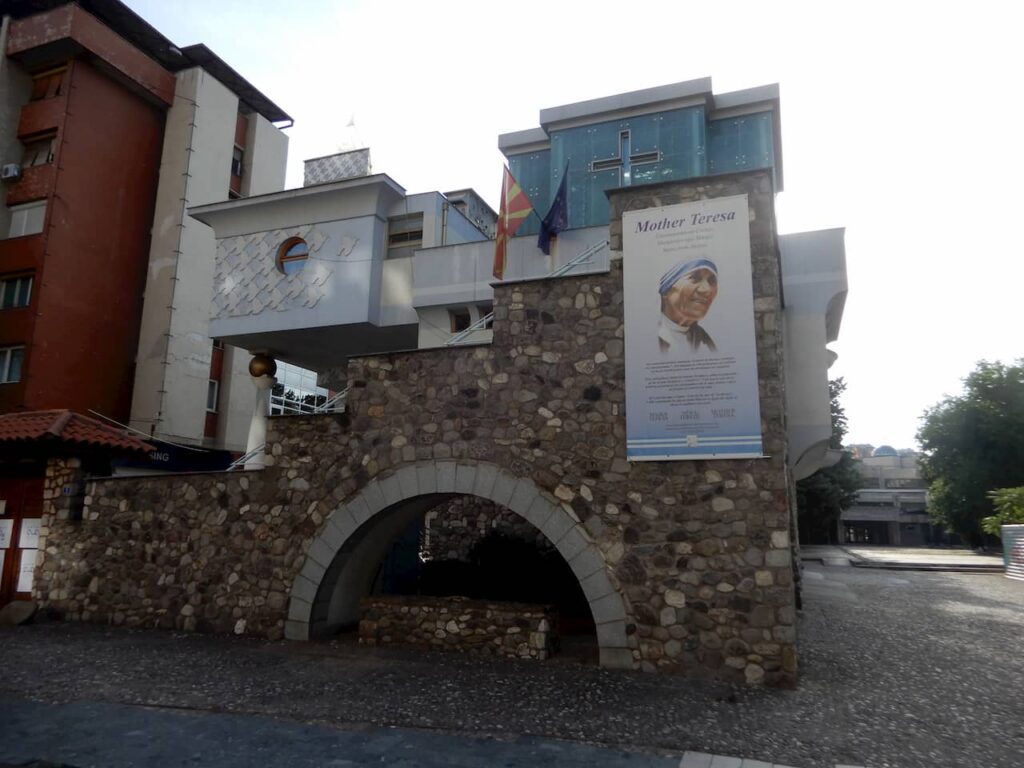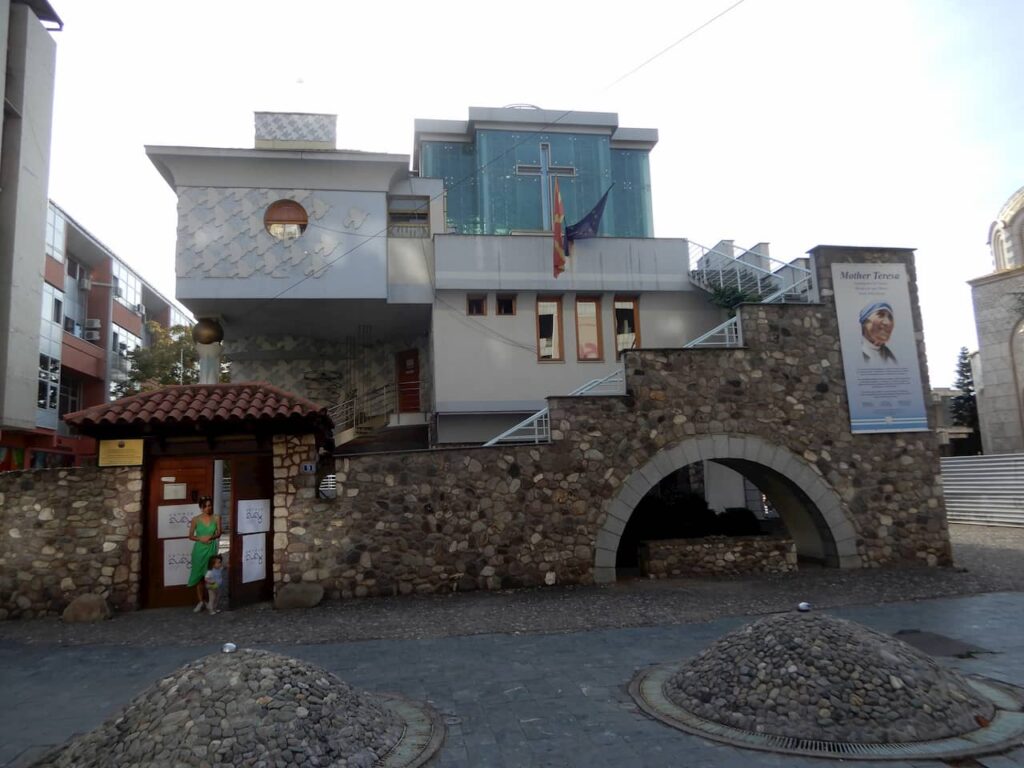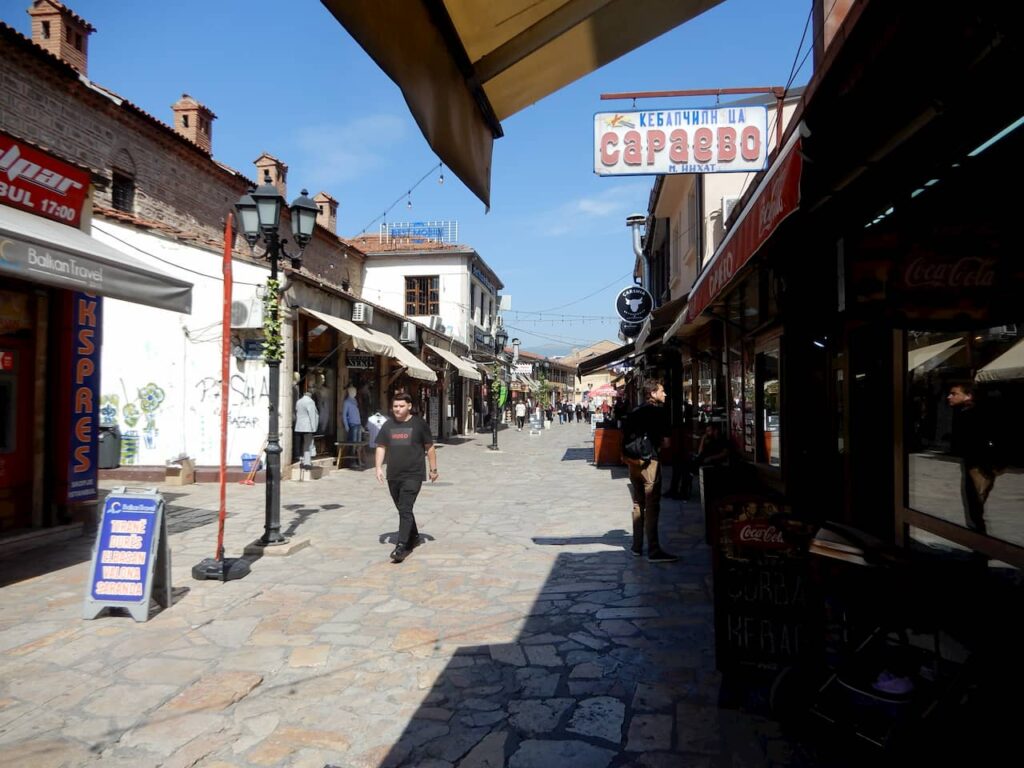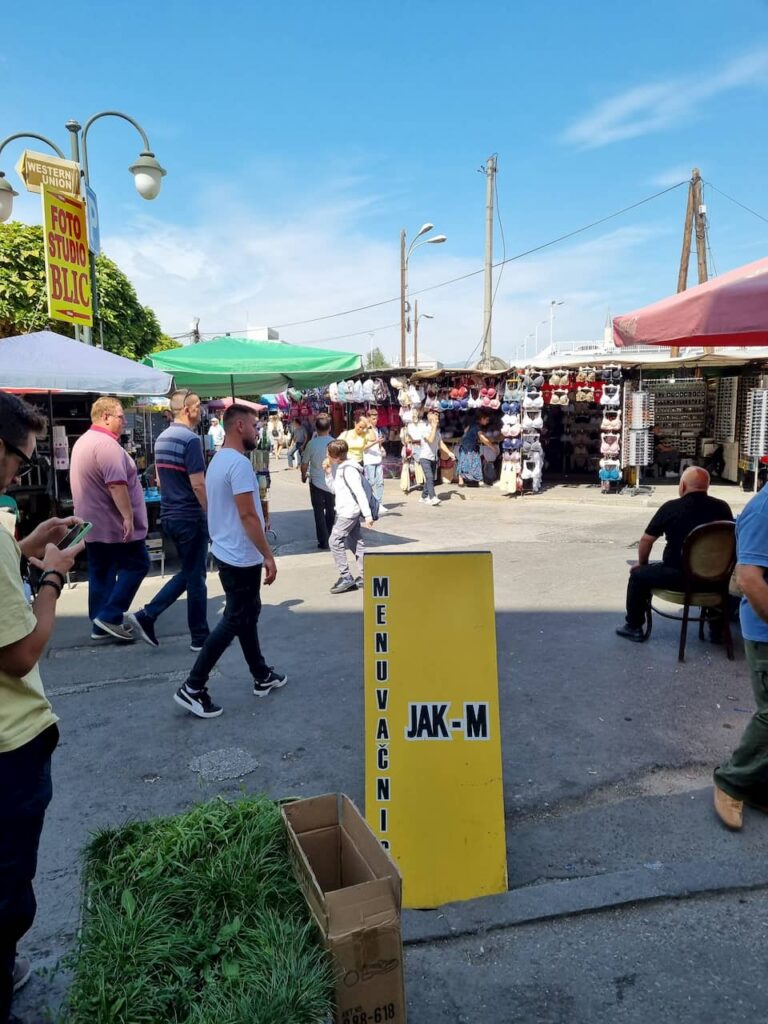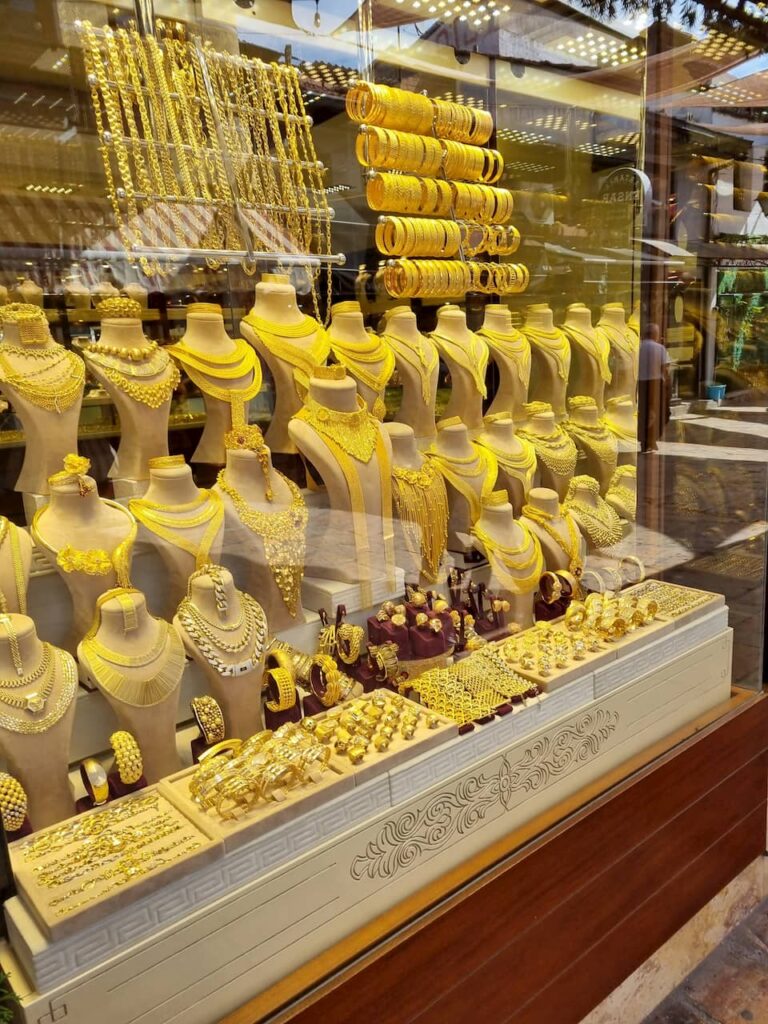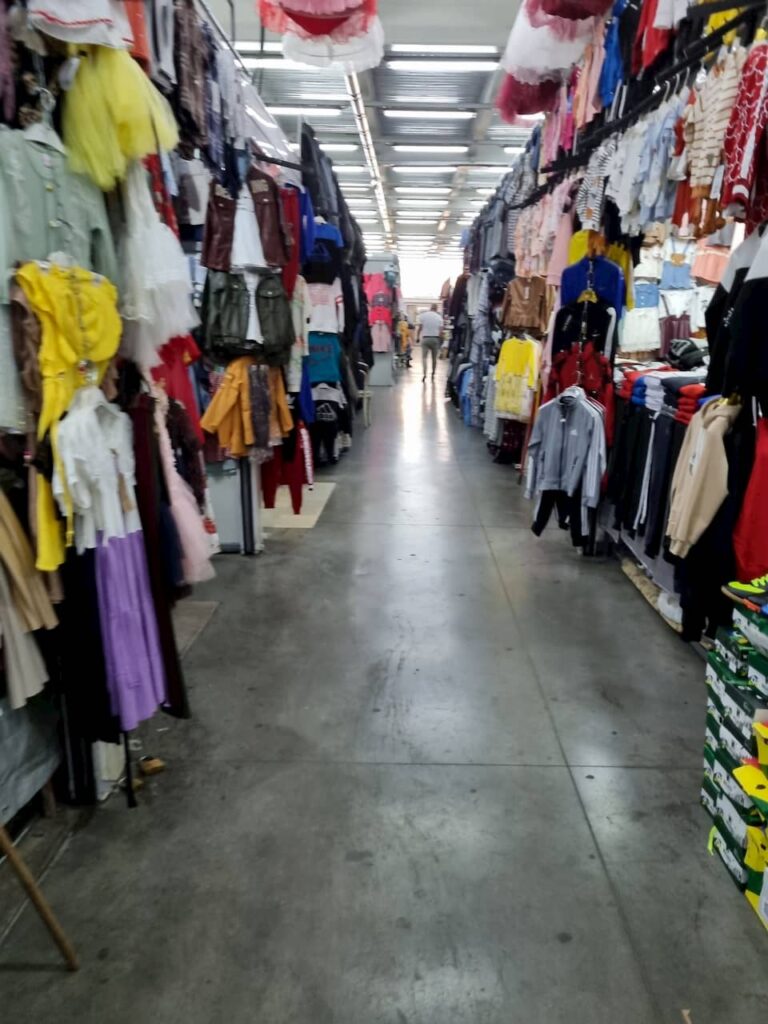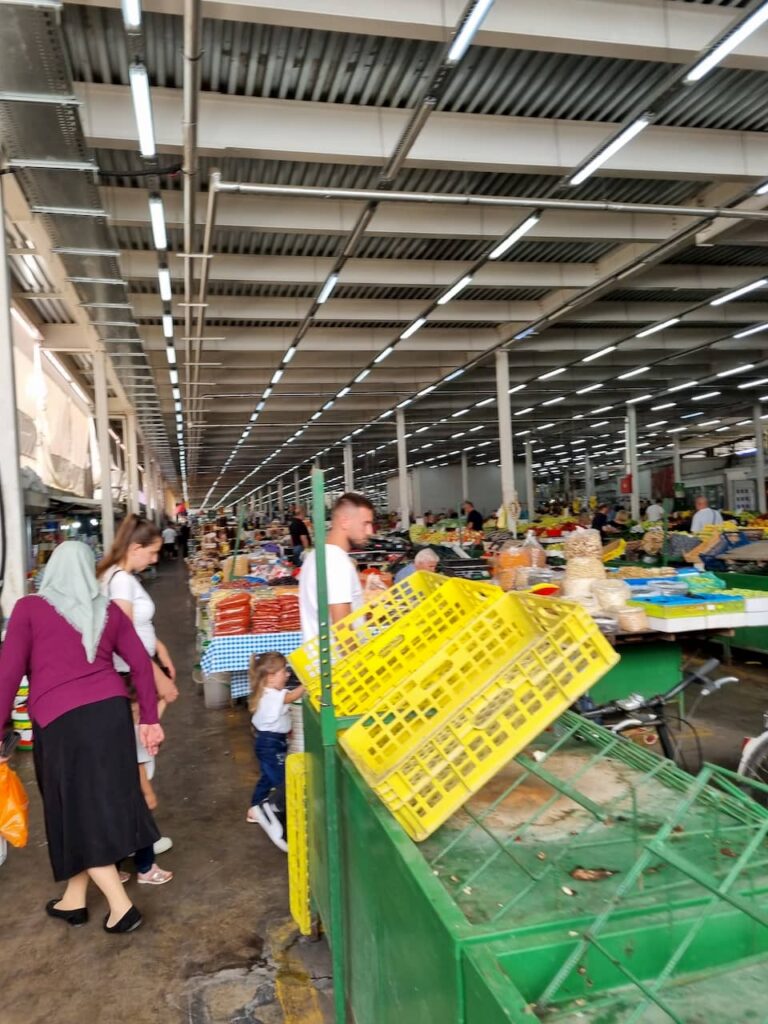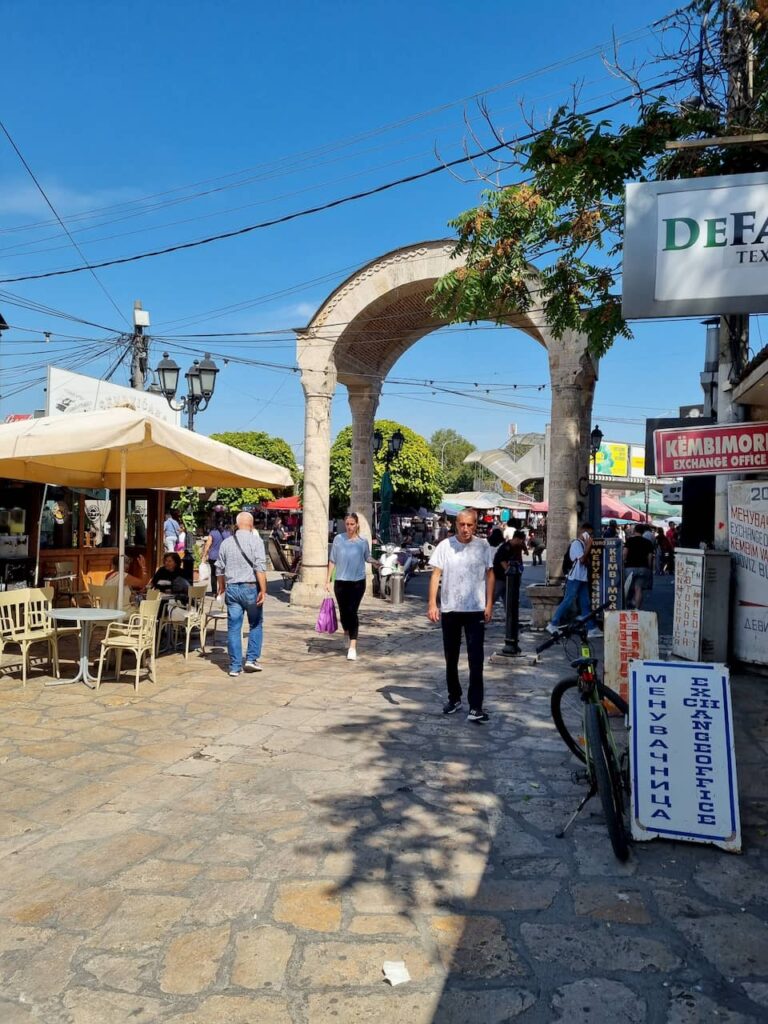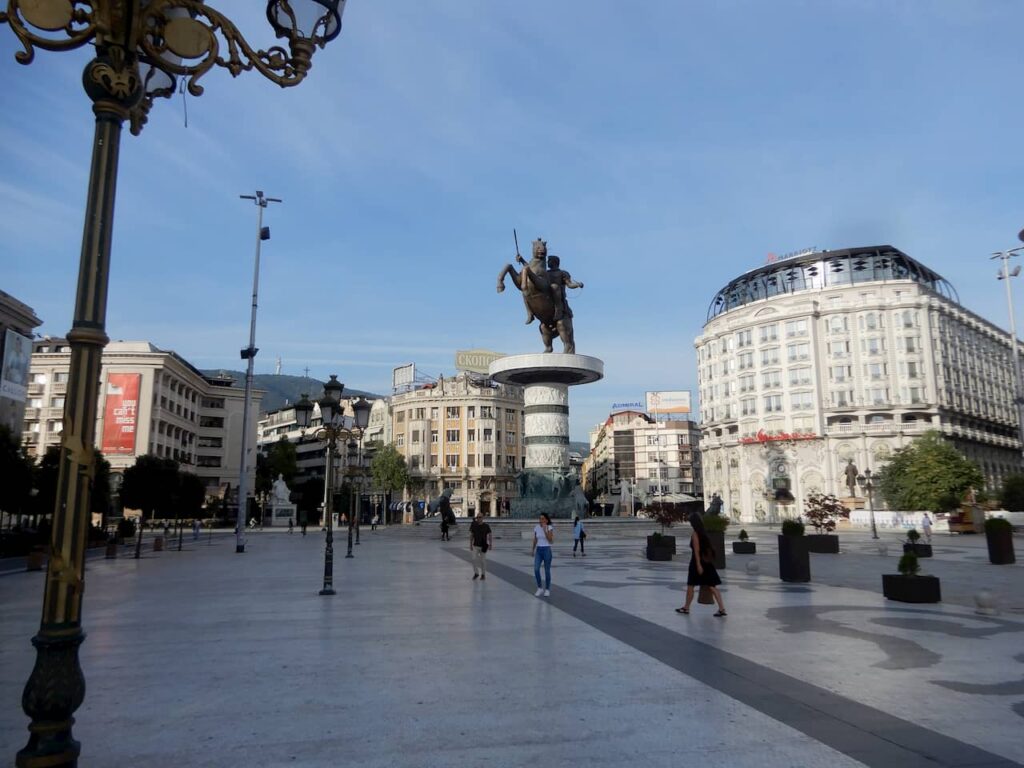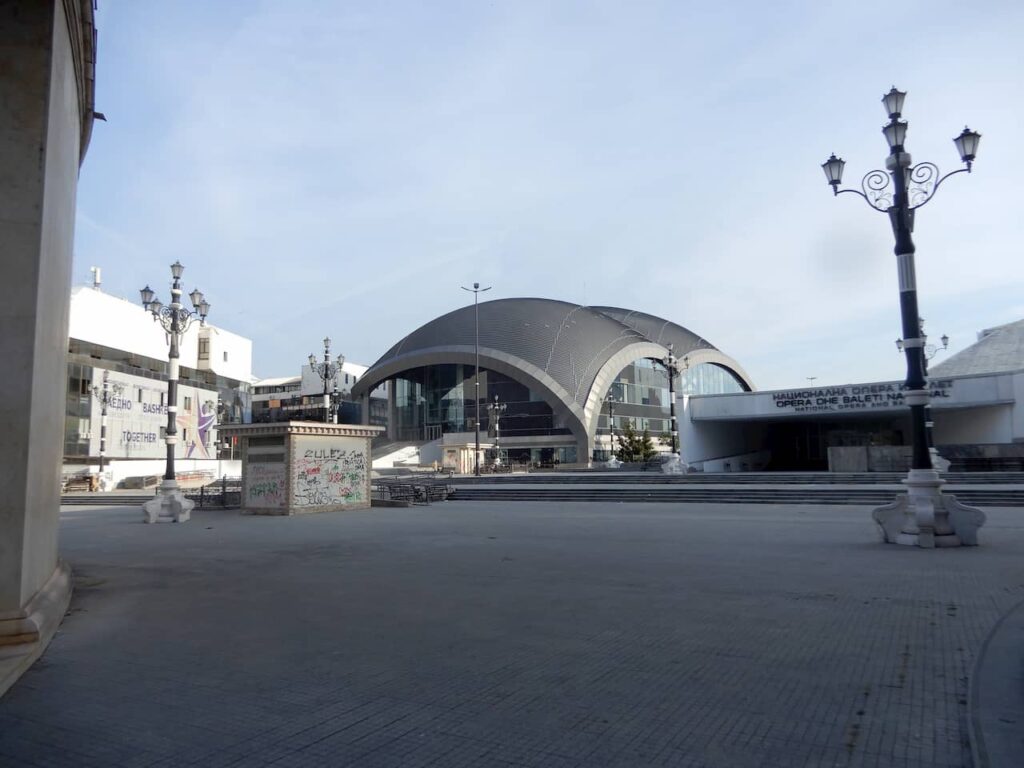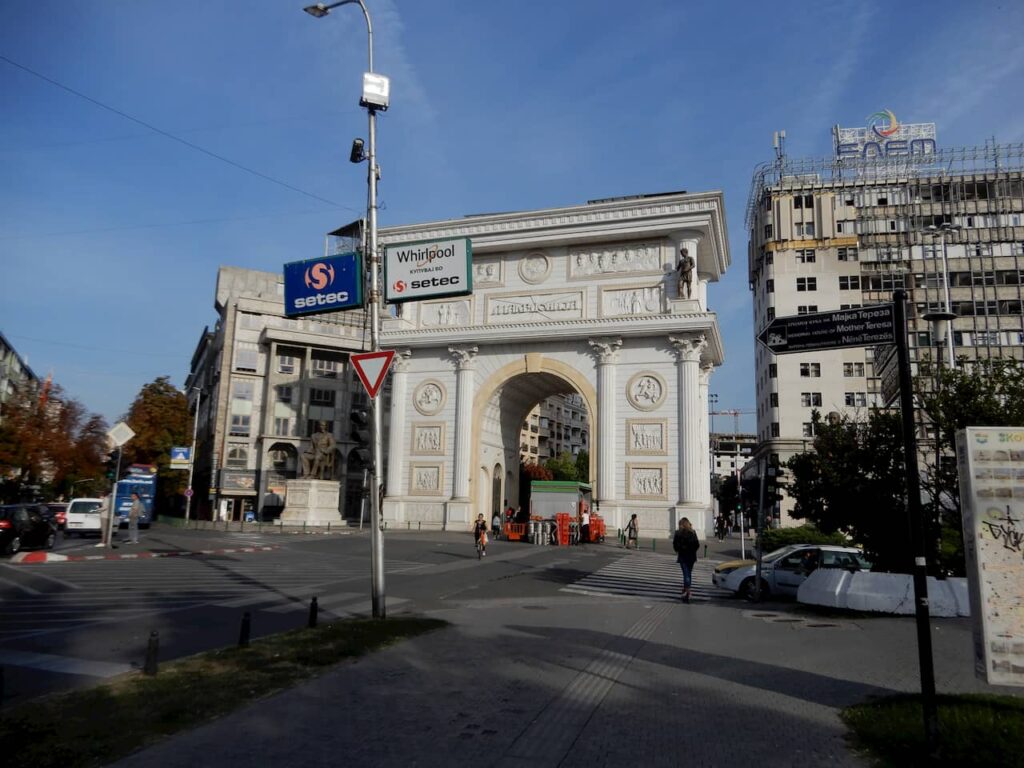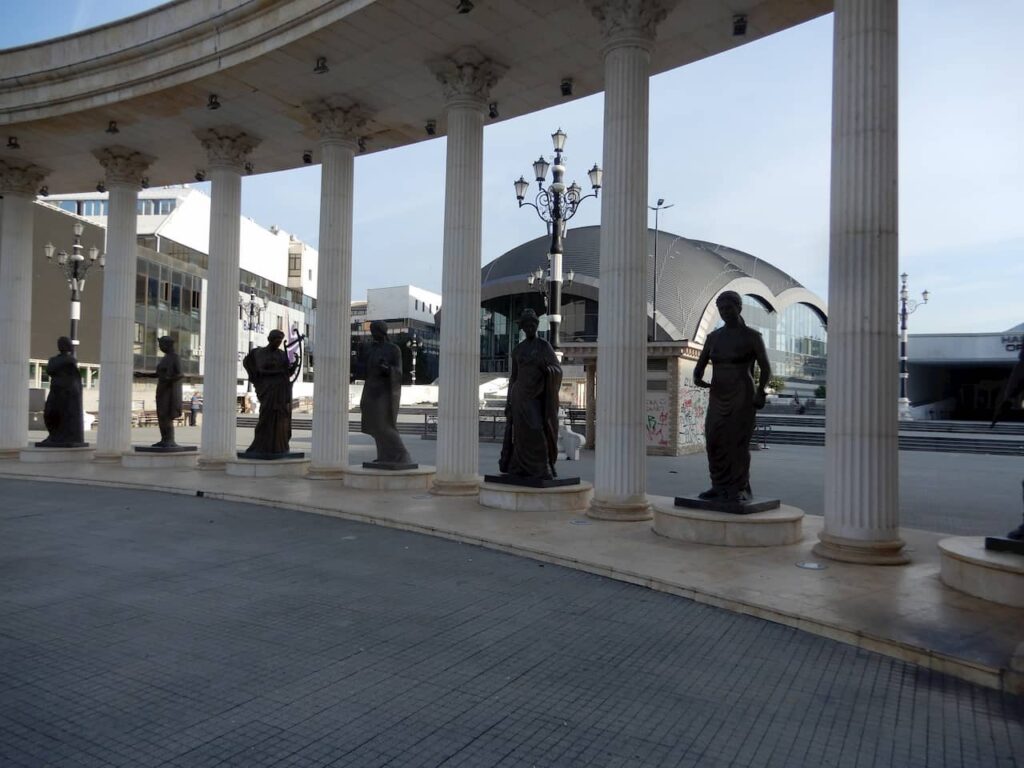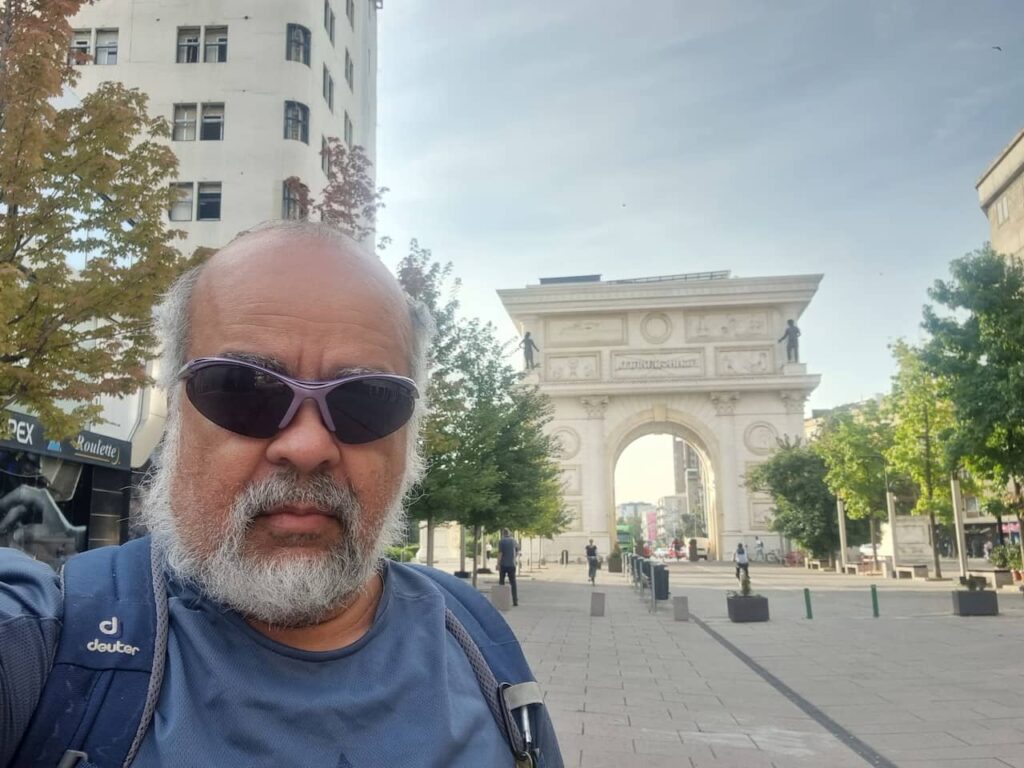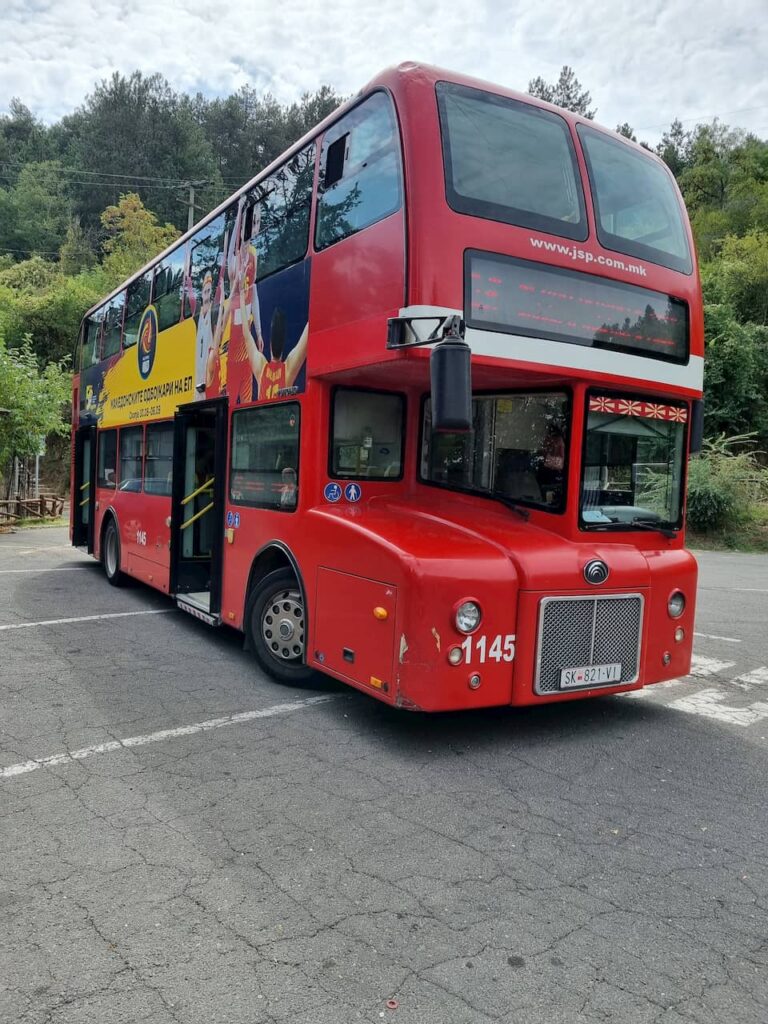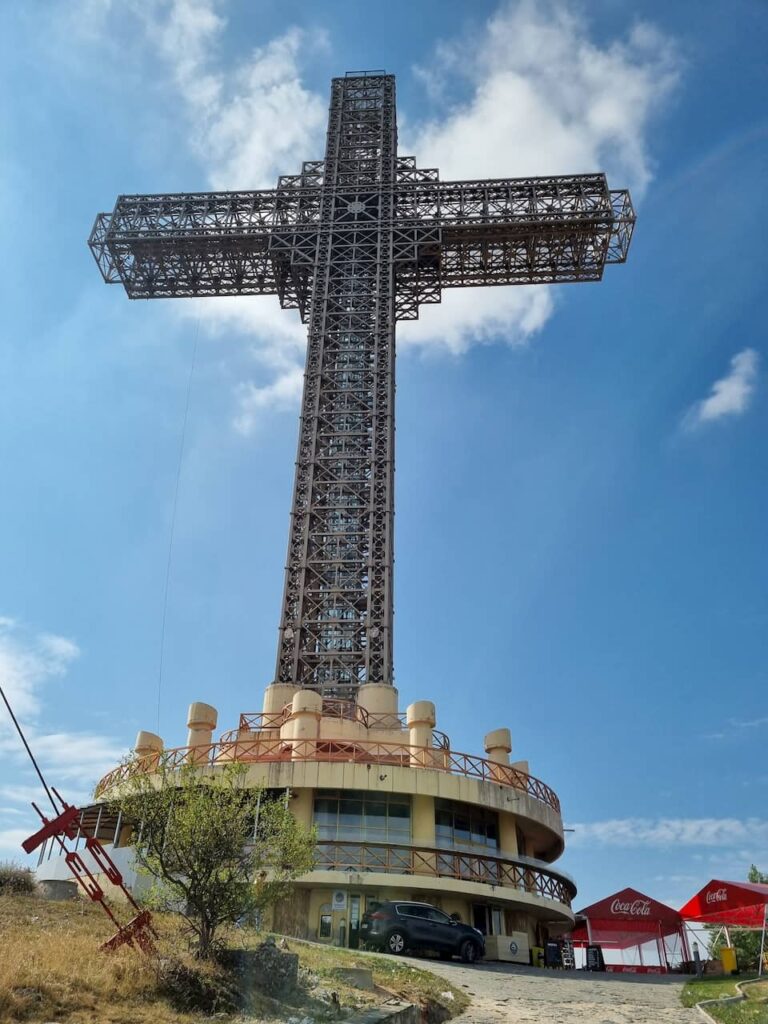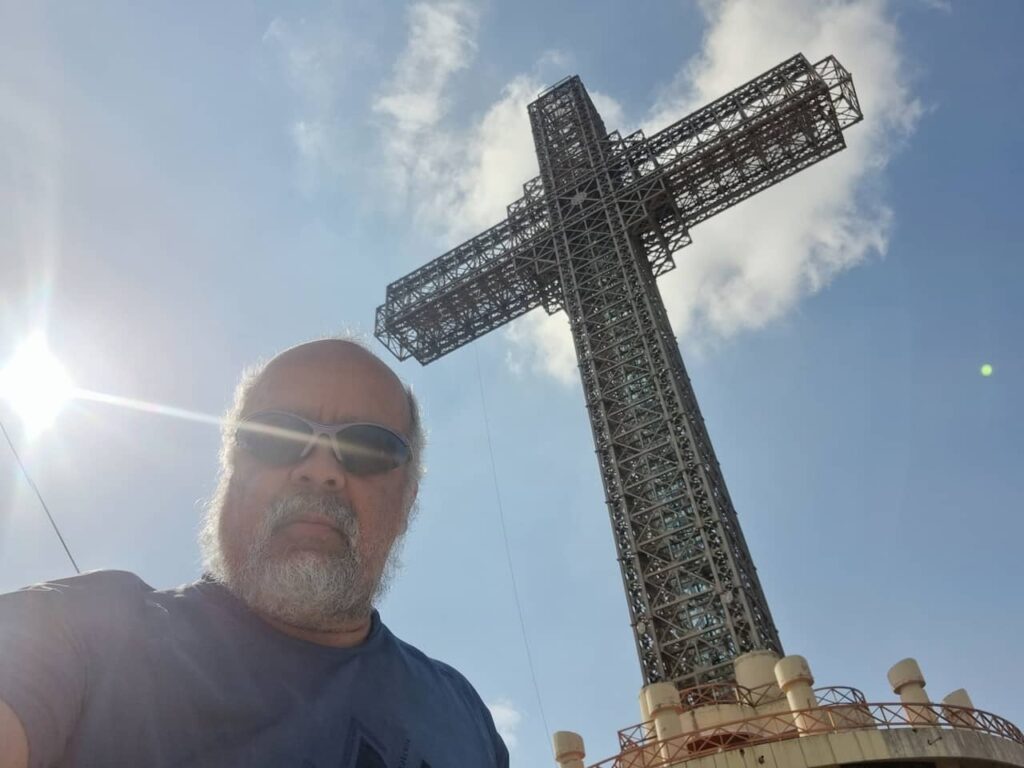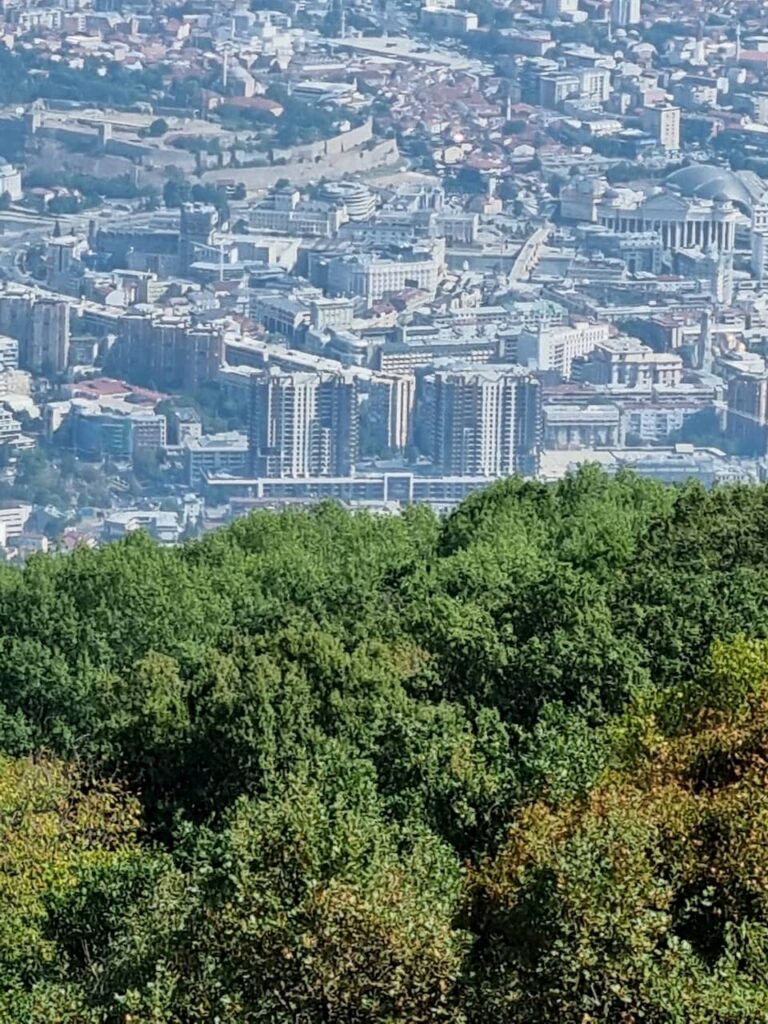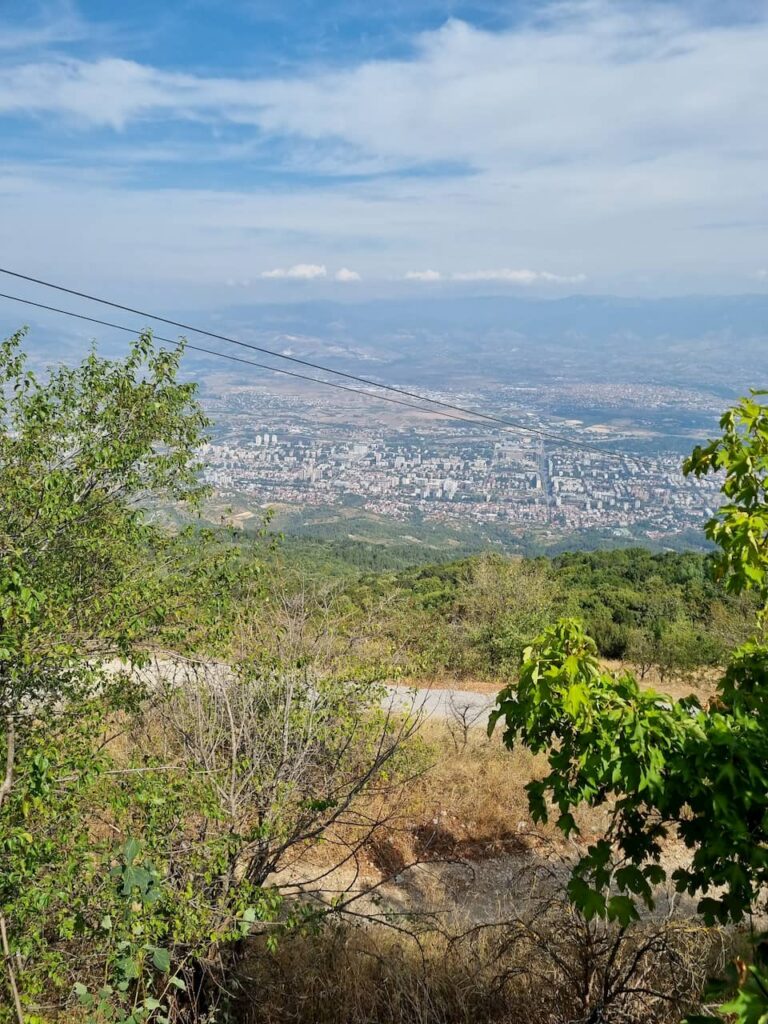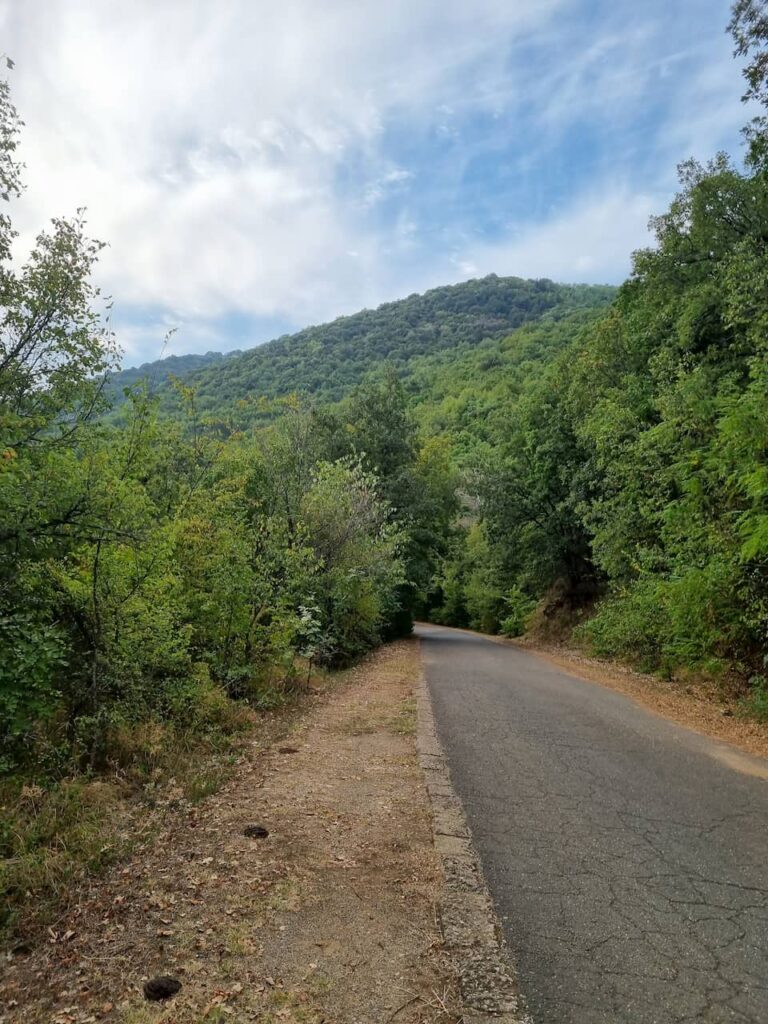Home » Destinations » Skopje
Skopje
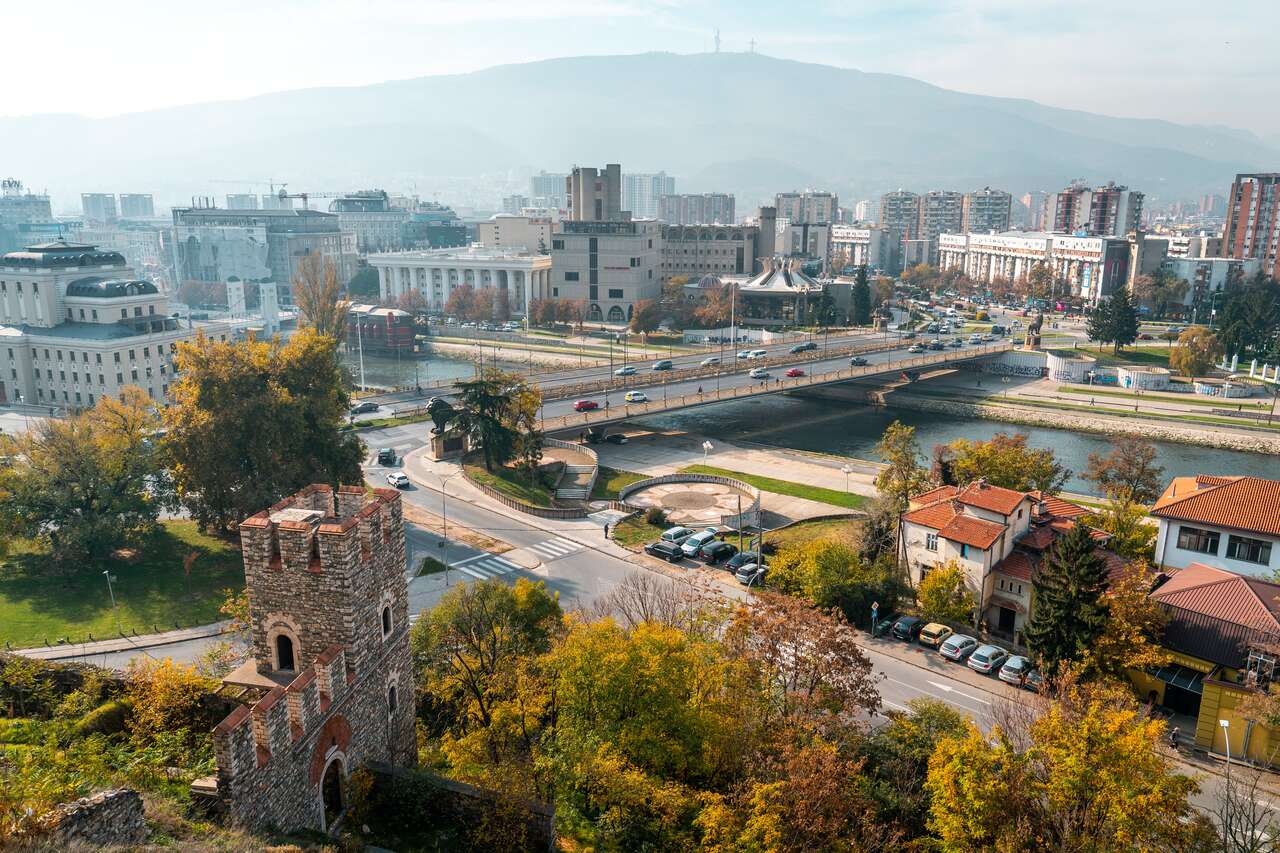
Skopie, is situated in the Vardar river valley, surrounded by mountains and hills
It is the capital of North Macedonia, which is located in southeastern Europe, in the Balkan region.
We Brazilians don’t know much about the place and when we arrive it’s a mixture of amazement and admiration for the place.
It is a city of contrast where its rich history dates back thousands of years.
and its modernity collide.
Skopje is made up of many fascinating and often contradictory cultural and historical layers, detectable in everything from architecture to food to language.
It was founded in the period of Classical Antiquity and passed through several hands over the centuries, including the Roman Empire, the Byzantine Empire and the Ottoman Empire.
In 1963, a devastating earthquake hit Skopje, causing enormous damage to the city. After this event, the city was rebuilt in a modern architectural style, with wide avenues and monumental buildings.
Skopje has a vibrant culture, with a number of museums, art galleries, theaters and entertainment venues, and is known for its lively nightlife and diversity of restaurants and cafes.
The cuisine reflects the cultural diversity of the region, with Ottoman, Mediterranean and Balkan influences. Typical dishes include kebabs, stuffed breads and a variety of salads.
The city is crossed by the Vardar river and thus has several bridges.
Main Tourist Attractions
Bridges
One of the most famous is the Stone Bridge (Kamen Most), built in the 15th century to connect the two parts of the city over the river.
Another famous bridge is the Civilizations Bridge, a modern bridge decorated with several statues, all lined up along both sides of the bridge, connecting the two sides of the old and new parts of Skopje.
I don’t know what they have with statues, but one of the city’s biggest challenges is visiting all the statues, which would be impossible, as there are hundreds of them.
Old Bazaar.
The market is located right in the center of the city and during the Ottoman era, Skopje was one of the most important commercial centers on the Balkan Peninsula and the Old Bazaar was a reminder of how prosperous the city was in its heyday.
A mix of old and new, with traditional shops housed in old Ottoman-era houses selling crafts and souvenirs, alongside trendy boutiques and modern cafes, creating a lively space for locals and travelers to enjoy themselves.
You will also find many restaurants and cafes that you can enjoy, which is a great place to take a break, have lunch, or have a cup of coffee in between your exploration of Skopje.
Macedonia Square
Macedonia Square is a vast public space and one of the most important tourist attractions, which serves as the city’s central meeting point right in the center, you will find a giant statue of Alexander the Great, the largest statue in the city with more than 22 meters, towering over all the surrounding buildings in the square.
Macedonian Gate
It is a triumphal arch built in 2011 to celebrate the 20th anniversary of the country’s independence from Yugoslavia, the structure is 21 meters high and is made of white marble and glass, featuring a series of decorative elements, including sculptures of figures and historical events, as well as Macedonian motifs and symbols.
Mother Teresa Memorial House
Mother Teresa, who became a saint and received the Nobel Prize for her efforts to help the poorest of the poor, was born and raised in Skopje
The house where he was born and raised was converted into the Mother Teresa Museum Memorial House, dedicated to life and work, featuring a collection of photographs, personal objects, and memorabilia related to the life and work of Mother Teresa.
Millennium Cross.
Although Skopje is a quiet town, there is nothing better than getting out into nature and one of the ways is to go to Millenium Cross. It is located on Mount Vodno on the outskirts of the city.
The cross was erected in 2002 to celebrate the second millennium of Christianity and is a significant part of Skopje’s landscape. In addition to its religious importance, the cross’s location offers stunning views of the city and surrounding area, making it a popular viewing point for visitors.
The easiest and cheapest way is to take bus 25, from Rodoviária and then you have the option of walking 6 km up or taking a cable car.
Although I really like walking, I chose the cable car, as it is very quick, 6 minutes and very convenient.

